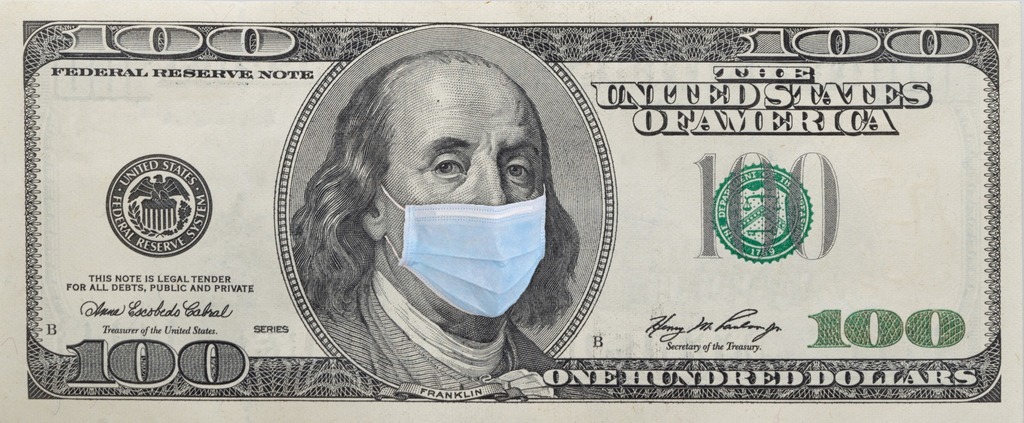
How Does the Restaurant Revitalization Fund Work?
The past year has been challenging for many small restaurant owners. The pandemic impacted these businesses immediately and in a devastating manner. Most establishments haven’t gotten the level of support they needed. They have sacrificed so much and, at the same time, developed creative solutions to continue to serve their communities.
On March 11, 2021, President Biden signed the American Rescue Plan Act that includes money earmarked for the Restaurant Revitalization Fund (RRF). This bill provides relief to the small restaurants that are in dire need of funding to stay afloat. With this assistance, lawmakers hope to revive the dining industry by allowing them to recover and rebuild.
If you are interested in learning more about how you can prepare to obtain available grants, connect with Fisher Bookkeeping to get started. The team specializes in helping restaurants with their finances and is ready to get on a call with you today.
What Is the Restaurant Revitalization Fund?
When 2019 ended, the United States had over 490,000 independently-owned restaurants. The dining industry as a whole typically employs more than 15 million people. These facts make it clear that supporting the industry’s survival is critical.
The American Rescue Plan Act aims to boost the nation’s overall economic recovery and access to healthcare. It includes many pieces that address and support issues surrounding:
- Vaccinations
- Health Insurance
- Schools Reopening
- Stimulus Checks
- Small Business Needs
Fortunately, it also provides $28.6 billion specifically for the Restaurant Revitalization Fund, administered by the Small Business Administration (SBA).
The funds will be available to eligible establishments in the form of tax-free federal grants. Unlike the PPP, businesses do not have to use the money exclusively for payroll expenses. More details on qualified uses are below.
The grant amount depends on your pandemic-related revenue loss, and different equations apply based on when you started your business. Working closely with your bookkeeper to hammer out the details is important. If you need to find one, reach out to the Fisher Bookkeeping team to get started. We love helping small businesses!
Which Businesses Are Eligible?
As with every piece of the various recovery packages, the RRF carries rules and restrictions around eligibility. When applying, businesses must attest that the uncertain current economic circumstances make the grant necessary to remain viable. They also must state that they have not applied for or received money from the Economic Aid to Hard-Hit Businesses, Nonprofits and Venues Act (“Shuttered Venues Act”).
Eligibility is only available to you if you own or operate 20 or fewer establishments. This restriction applies whether they all do business under the same name or not. Businesses owned by any state or local government aren’t eligible, along with any publicly traded companies.
Your business does not have to be a sit-down, dine-in restaurant to apply. The following types of companies are included in the RFF:
- Restaurants
- Caterers
- Food Trucks, Carts, and Stands
- Bars, Lounges, Taverns, Saloons, Inns
- Tasting Rooms, Brewpubs, and Taprooms
Basically, if your establishment’s primary purpose is to serve customers food and drinks, you fall under the coverage of the RRF. Restaurants that operate in airports and Tribally-owned establishments also fall under the RRF’s qualifications.
How Much Are the RRF Grants?
The Restaurant Revitalization Fund provides $5 billion for businesses with less than $500,000 in gross receipts. An additional $20 billion is for covering different sizes of establishments.
Owners can apply for amounts up to $5 million or up to $10 million for multi-location enterprises. The most straightforward award determination is for businesses that were operating for all of 2019. They simply deduct their 2020 revenue from their 2019 revenue to find their eligible amount.
There are different determinations for those who weren’t operating the full 2019 year or who opened their doors in 2020 before the shutdown. Speak with your bookkeeper to make sure you apply for the correct amount.
The Small Business Administration has the ability to adjust award amounts based on demand and the local market cost where eligible businesses operate.
How Can Restaurants Use the RRF Grant Funds?
Those who receive money through the RRF must use it to cover eligible expenses incurred from February 15, 2020, to December 31, 2021. You have to use the grant funds on costs that are essential to maintaining operations.
Eligible expenses include:
- Payroll
- Mortgage Obligations or Rent (NOTE: Prepayments are not eligible.)
- Utilities
- Outdoor Accommodations: Construction and Maintenance
- Personal Protective Equipment
- Cleaning Supplies
- Food and Beverage Expenses
- Paid Sick Leave
- Operational Costs
If a business closes before December 31, 2021, or does not use all the funds awarded, the remaining funds go back to the Treasury.
How and When To Apply
Although there is no official launch date yet for RRF applications, the SBA will administer and disperse these grants. The agency appears to be aiming for April to roll out the applications in phases. Keep an eye on their website for that announcement.
Restaurant owners who want to apply for a grant should register with the System for Award Management if they haven’t done so already. You also need a DUNS number in order to apply. Neither of these steps is particularly complicated, but they can take some time to complete.
For 21 days after the applications are available, priority will go to establishments that are:
- Women-Owned or Controlled
- Veteran-Owned or Controlled
- Socially Disadvantaged
- Economically Disadvantaged
If any of these fit your situation, be sure you are ready to apply as soon as it’s an option.
A crucial step is to prepare your paperwork to clearly show your gross revenue loss in 2020. Having all of this data ready will make your application process more manageable and increase the likelihood of receiving funds.
Take Advantage of Expert Help
The Restaurant Revitalization Fund offers critical economic relief to this hard-hit industry and seeks to mitigate the damage that COVID brought. If you own an eligible dining establishment, you will likely benefit from this fund, so let’s get you some money!
Fisher Bookkeeping is ready to serve you as you prepare for the RRF application. We have extensive experience working with restaurant owners and are eager to see you get your share of the available help. Reach out today to schedule a free consultation.
About the Author Barb Fisher
Barb is the CEO of Fisher Bookkeeping, an outsourced bookkeeping consultancy that provides small businesses with a full-service financial department. Her favorite aspect of work is to break down the accounting to meaningful bits, so entrepreneurs can make a powerful difference in their own business. She's also a power lifter (squat: 215, DL: 270).




